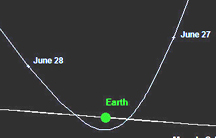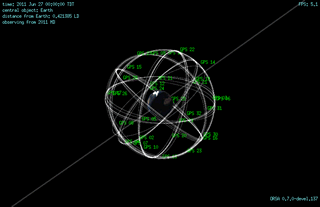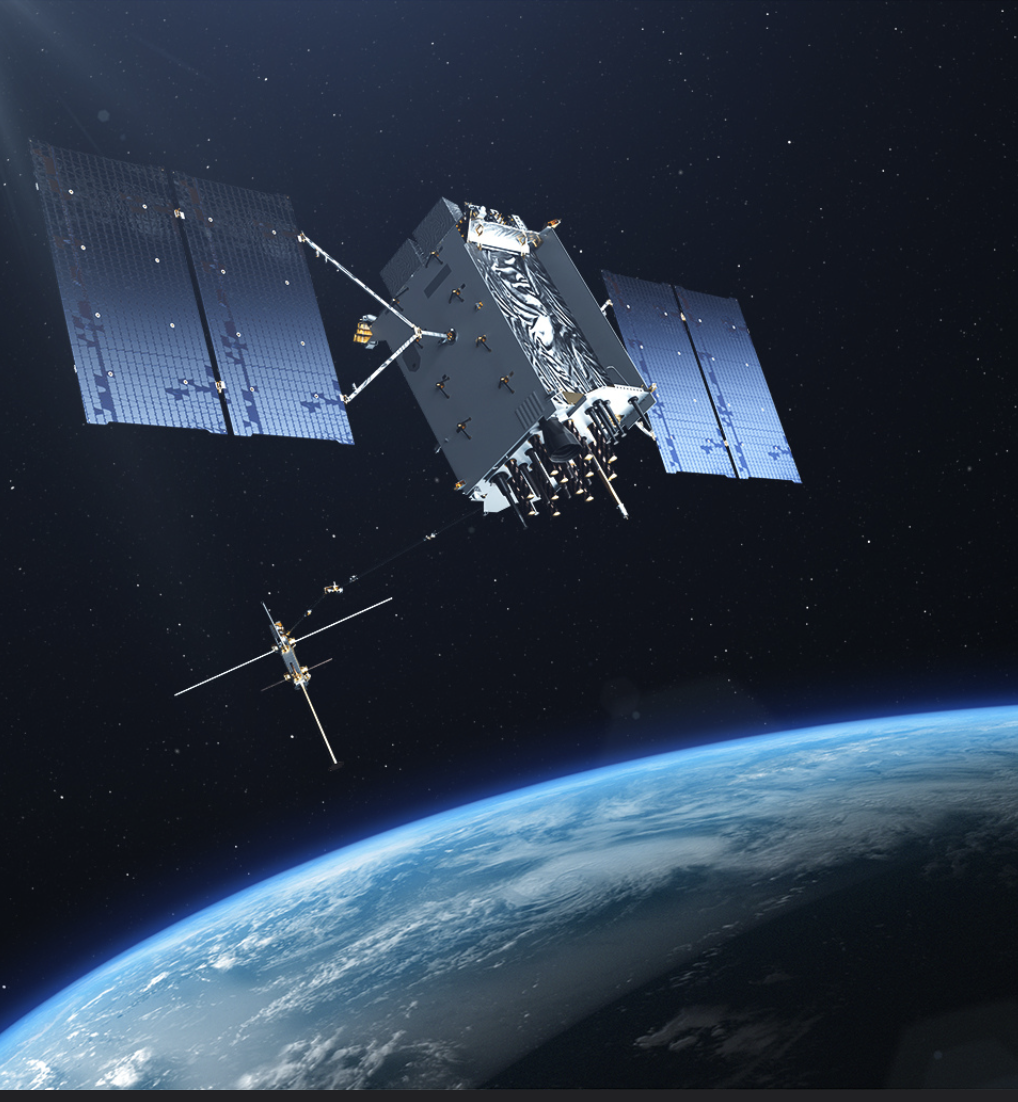 MD 2011 trajectory (NASA)
MD 2011 trajectory (NASA)A schoolbus-sized asteroid grazed the Earth’s atmosphere around 1:00 P.M. (EDT) on June 27. It was 7,600 miles (12,300 km) away at its closest point, at which time it veered away across the South Atlantic Ocean.
It actually passed through the GPS constellation, alerting us to the vulnerability of our vital PNT space vehicles. We can now add asteroids to the the list of GNSS collision risks that already includes other satellites and space debris.
A schoolbus-sized asteroid grazed the Earth’s atmosphere around 1:00 P.M. (EDT) on June 27. It was 7,600 miles (12,300 km) away at its closest point, at which time it veered away across the South Atlantic Ocean.
It actually passed through the GPS constellation, alerting us to the vulnerability of our vital PNT space vehicles. We can now add asteroids to the the list of GNSS collision risks that already includes other satellites and space debris.
Pasquale Tricarico, a scientist studying asteroids at the Planetary Research Insitute in Tucson, Arizona USA, created several animations of the Monday afternoon "meet and greet" in which MD 2011 encountered GPS.
The Near-Earth Object (NEO) is named MD 2011 and it has an orbit much likes ours around the sun, according to NASA.
See Dr. Tricarico’s animation of the GPS constellation from the point of view of the asteroid below:






